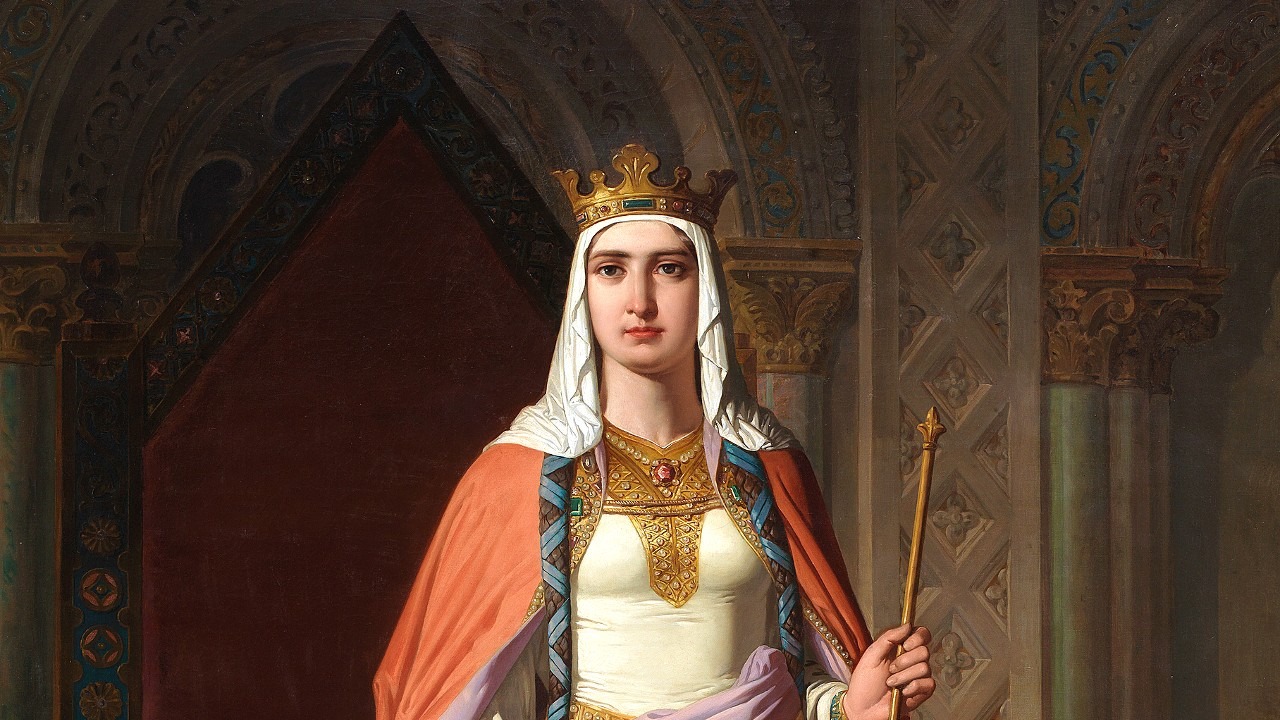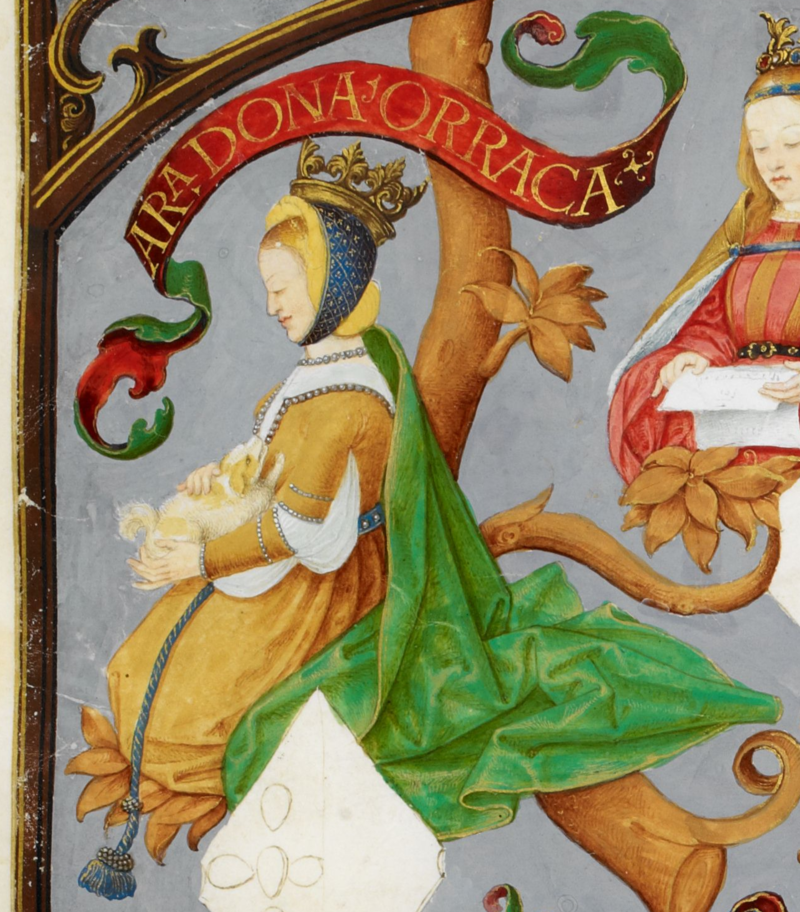In a rare and insightful interview, Princess Urraca of Bourbon-Two Sicilies shared her memories of her royal family and their experiences during the tumultuous years of World War II. Born in 1913, Princess Urraca was the youngest child of Prince Ferdinand Pius of Bourbon-Two Sicilies, Duke of Calabria, and Princess Maria Ludwiga Theresia of Bavaria.
Princess Urraca’s recollections of her family’s life under the watchful eye of the authorities are both poignant and revealing. She recalled how her parents, the Duke and Duchess of Calabria, lived with their children at Villa Amsee, just outside Lindau, and how they were always accompanied by plainclothes police when traveling. This interview, published in the now defunct French-language magazine *Bourbons*, offers a unique glimpse into the life of a royal family during a time of great turmoil and upheaval.
what were some of the most significant challenges Princess Urraca faced during her life

- Limited Freedom: As a member of the royal family, Princess Urraca was constantly watched and accompanied by plainclothes police, limiting her freedom and ability to move about without restrictions.
- War and Turmoil: Her family lived through World War II, which brought significant turmoil and uncertainty to their lives. Princess Urraca recalled the sadness and fear that came with being a royal family during this time.
- Marriage and Family: Princess Urraca’s family was marked by a history of arranged marriages and the challenges that came with them. Her great-aunt, Queen Sophia, was known for being a severe woman, and Princess Urraca herself was afraid of her.
- Loss and Grief: Princess Urraca’s family experienced significant loss, including the death of her father, the Duke of Calabria, and the inability to know her ancestors and friends due to the war and restrictions.
- Restrictions on Travel: Princess Urraca and her family were not allowed to travel freely, which limited their ability to experience different places and cultures.
These challenges, among others, shaped Princess Urraca’s life and experiences, particularly during her childhood and early years.
how did Princess Urraca’s experiences during World War II shape her later life

what specific events during World War II had the most profound impact on Princess Urraca
 |
| Princess Urraca of Bourbon-Two Sicilies. |
In the fall of 1998, Princess Urraca of Bourbon-Two Sicilies gave an interview to Giuseppe Scammacca. This interview was published in the now defunct French-language magazine Bourbons. Below one can read an English translation of the interview of the princess.
+++++++
Your Royal Highness is one of the great nieces of the last Neapolitan sovereign, His Majesty Francesco II. What kind of memories did the Duke of Calabria, the father of Your Royal Highness, impart to you of the king?
Naturally, my father, but also my grandfather [the Count of Caserta] often spoke to me of Francesco II, as well as to my three sisters. The idea that we had as children was that the king was a man struck by sorrows and the trials of life. Probably due to various betrayals that he endured… I remember very well my great-aunt, the Queen Sophia. She was a severe woman; I was so afraid of her.
Can you provide us with a description of the Duke of Calabria, your father?
My father followed the family’s traditions, notably in reorganising the Constantinian Order of which he was Grand Master for a long time. He also pursued a military career in the Spanish army of his cousin King Alfonso XIII; I believe that I remember that he was a very talented engineering officer. He fought in Spanish Morocco.
One of my saddest memoirs: the death in his youth of his son (my brother), the Duke of Noto, the presumptive heir. He died from the Spanish flu that ravaged Europe during the First World War.
Called to God in 1960, the Duke of Calabria was by right His Majesty King Ferdinando III. How did he carry out this dignity far from the land that had witnessed his birth?
To tell the truth, my father was not born in Naples but in Rome, at the Palazzo Farnese. However, he only lived there for a year, since he, like his entire family, had to leave the new Italy after September 1870; this exile did not end until 1938, on the occasion of my sister Lucia’s marriage to Prince Eugenio of Savoy-Genoa, Duke of Ancona. I remember that my father spent a lot of his time, when he lived in Bavaria, to constitute and reorganise archives relating to the royal family and therefore to the Kingdom of the Two Sicilies. Unfortunately, part of these documents was destroyed during the bombing of Munich during World War II. He donated what was left of the archives to the city of Naples.
What can you tell us about your father’s stay in Spain?
I have often been told of the military feats of my grandfather, who had been the Chief of Staff in the Carlist armies who fought for King Carlos VII of Spain, Duke of Madrid. In 1874, when the Duke of Madrid had to take refuge in France, my grandfather rode alongside him when they arrived in Pau. This is where the daughter of the Carlist King, Princess Alicia, was born.
As a Capetian princess, how do you view the House of Bourbon?
Personally, I feel first of all Neapolitan and Sicilian; moreover, when I travel to the old kingdom, I see everywhere the proof of the moral, cultural and spiritual heritage that my family left there. But I was just talking about Pau; that’s where Henri VI started out. So I am also French at heart, as I am undoubtedly Spanish and Parmesan. Indeed, the Bourbons reigned everywhere, until America. It’s amazing, isn’t it?
You yourself have experienced exile. How did you feel when you went through this ordeal?
Sadness; in particular, that of not being able to know the countries and the friends that our parents wanted to tell us about. Of course, my mother, my sisters and I could cross the north of Italy to get from Munich to Cannes… But remember that we were always watched, accompanied on the train by plainclothes police. And, it was not until 1938 that my father was able to return to Italy. However, since the end of World War II, we were finally free. It is all the more strange that my Bavarian cousins have never suffered this kind of annoyance … and have always lived in their homeland.
You return from time to time to the lands that constituted the Kingdom of the Two Sicilies. What are your feelings there?
I am at home there! And I have so many friends there!
Exactly, what is the attitude of the Italians and, more precisely, of the Neapolitans and the Sicilians towards you?
As I just told you, grand and loving are the feelings of the people I meet. All still speak – and I will even say more and more – of my ancestors whom they consider as the image of the continuity of the moral and political values which embodied the history of our kingdom. Moreover, I am invited to the many events organised by cultural groups and movements that want to seriously study the true history of the nineteenth century.
+++++++
 |
| The Duchess of Calabria with her youngest child Princess Urraca. |
Born on 14 July 1913 at Schloß Nymphenburg in Munich, Princess Urraca Maria Isabella Carolina Aldegonda of Bourbon-Two Sicilies was the sixth and youngest child of Prince Ferdinand Pius of Bourbon-Two Sicilies, Duke of Calabria and his wife Princess Maria Ludwiga Theresia of Bavaria. Urraca chose not to celebrate her birthday, remarking: “How can a Bourbon celebrate on the day of the storming of the Bastille?” The princess had five older siblings: Princess Maria Antonietta (1898–1957); Princess Maria Cristina (1899–1985; married Manuel Sotomayor-Luna, Vice President of Ecuador); Prince Ruggiero, Duke of Noto (1901–1914), Princess Barbara (1902–1927; married Count Franz Xaver zu Stolberg-Wernigerode), and Princess Lucia (1908–2001; married Prince Eugenio of Savoy, Duke of Ancona). The Duke and Duchess of Calabria lived with their children at Villa Amsee just outside Lindau.
 |
| Princess Urraca of Bourbon-Two Sicilies and Princess Michael of Kent, Venice, 1990. Photograph (c) Marcellino Radogna. |
 |
| Press report on the 1957 accident. |
 |
| The grave of Princess Urraca of Bourbon-Two Sicilies. |
what were Princess Urraca’s major achievements
- Limited Freedom: As a member of the royal family, Princess Urraca was constantly watched and accompanied by plainclothes police, limiting her freedom and ability to move about without restrictions.
- War and Turmoil: Her family lived through World War II, which brought significant turmoil and uncertainty to their lives. Princess Urraca recalled the sadness and fear that came with being a royal family during this time.
- Marriage and Family: Princess Urraca’s family was marked by a history of arranged marriages and the challenges that came with them. Her great-aunt, Queen Sophia, was known for being a severe woman, and Princess Urraca herself was afraid of her.
- Loss and Grief: Princess Urraca’s family experienced significant loss, including the death of her father, the Duke of Calabria, and the inability to know her ancestors and friends due to the war and restrictions.
- Restrictions on Travel: Princess Urraca and her family were not allowed to travel freely, which limited their ability to experience different places and cultures.
These challenges, among others, shaped Princess Urraca’s life and experiences, particularly during her childhood and early years.
As we conclude this fascinating interview with Princess Urraca of Bourbon-Two Sicilies, we are reminded of the significant challenges she faced during her life. Born in 1913, Princess Urraca was a member of the royal family and lived through the tumultuous years of World War II. Her experiences during this time were marked by restrictions and limitations imposed on her as a member of the royal family, including being constantly watched and accompanied by plainclothes police. Despite these challenges, Princess Urraca remained steadfast in her commitment to her family and her heritage, and her stories offer a unique glimpse into the life of a royal family during a time of great turmoil and upheaval.
Princess Urraca’s life was marked by a deep sense of duty and loyalty to her family and her heritage. Her experiences during World War II, although difficult, did not deter her from her commitment to her family and her role as a member of the royal family. In fact, her stories offer a powerful reminder of the importance of perseverance and resilience in the face of adversity. As we reflect on Princess Urraca’s life, we are reminded of the significant impact she had on those around her and the lasting legacy she left behind. Her stories serve as a testament to the enduring power of family and heritage, and we are grateful for the opportunity to share them with you. Princess Urraca’s life is a powerful reminder of the importance of staying true to oneself and one’s values, even in the face of adversity. Her stories will continue to inspire and educate future generations, and we are honored to have had the opportunity to share them with you.


